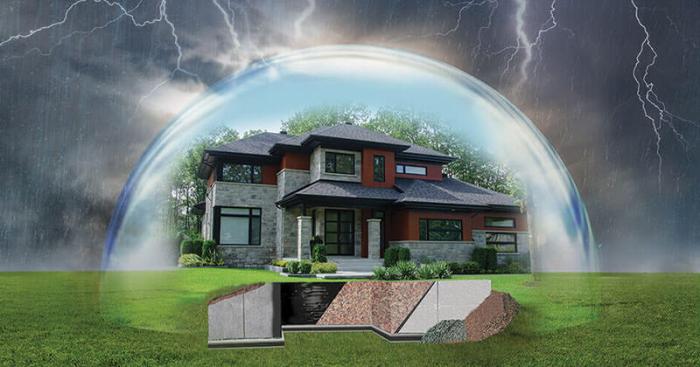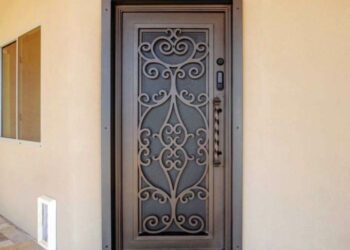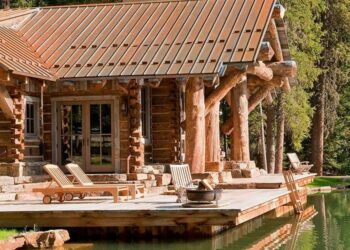Diving into the realm of home waterproofing solutions, this introduction sets the stage for a detailed exploration of protecting your home from water damage. From the importance of effective waterproofing to the various types and factors to consider, this guide aims to equip you with essential knowledge to safeguard your home.
As we delve deeper, we will uncover the different types of solutions available, maintenance tips to prolong their effectiveness, and the critical factors to bear in mind when choosing the right waterproofing solution for your home.
Importance of Home Waterproofing Solutions
Protecting your home from water damage is crucial to ensure its structural integrity and longevity. Water infiltration can lead to a multitude of issues, including mold growth, rotting of wood, and foundation damage.
Effective waterproofing solutions can prevent costly repairs down the line by creating a barrier against water intrusion. By investing in proper waterproofing, you can save money on potential repairs and maintenance in the future.
Examples of Damage Without Proper Waterproofing
- Basement flooding, leading to damage to flooring, furniture, and personal belongings.
- Cracks in the foundation due to water seepage, compromising the stability of the entire structure.
- Mold and mildew growth in damp areas, posing health risks to occupants and requiring extensive remediation.
Different Types of Home Waterproofing Solutions
When it comes to protecting your home from water damage, there are various types of waterproofing solutions available. Each method has its own advantages and disadvantages, so it's important to understand the differences between them.
Interior Sealants
Interior sealants are applied to the inside walls of your basement or foundation to create a barrier against water penetration. While they can be effective in preventing moisture from seeping through, they may not address the root cause of the issue.
Exterior Waterproofing
Exterior waterproofing involves applying a waterproof membrane or coating to the outside of your home's foundation to prevent water from entering. This method is more comprehensive than interior sealants but can be more expensive.
Drainage Systems
Drainage systems, such as French drains, are designed to redirect water away from your home's foundation. These systems can be effective in preventing water buildup around your property, but they require proper installation and maintenance.
DIY Solutions vs. Professional Waterproofing Services
- DIY Solutions:DIY waterproofing solutions can be cost-effective, but they may not provide the same level of protection as professional services. They are suitable for minor water issues but may not address more serious water damage problems.
- Professional Waterproofing Services:Hiring professionals for waterproofing ensures a thorough and long-lasting solution. They have the expertise and equipment to tackle complex water issues effectively, but it comes at a higher cost.
Pros and Cons of Each Type of Waterproofing Solution
| Interior Sealants | Exterior Waterproofing | Drainage Systems |
|---|---|---|
| Pros | Pros | Pros |
| - Easy to apply | - Comprehensive protection | - Redirects water away |
| - Cost-effective | - Long-lasting solution | - Prevents water buildup |
| Cons | Cons | Cons |
| - May not address root cause | - More expensive | - Requires maintenance |
Factors to Consider When Choosing Waterproofing Solutions
When it comes to selecting the right waterproofing solution for your home, there are several key factors that need to be taken into consideration. These factors can have a significant impact on the effectiveness and longevity of the waterproofing system.
Climate, Soil Type, Foundation Material, and Water Table Level
- Climate: The amount of rainfall and humidity in your area can determine the level of waterproofing needed.
- Soil Type: Different soil types can affect the drainage around your home, influencing the choice of waterproofing solution.
- Foundation Material: The material your home's foundation is made of can impact the type of waterproofing system that is most suitable.
- Water Table Level: The level of the water table in your area can affect the likelihood of water seepage into your basement or crawl space.
Age and Condition of Your Home
- Older homes may have existing waterproofing systems that are outdated or damaged, requiring a more thorough waterproofing solution.
- The overall condition of your home, including any cracks or weaknesses in the foundation, can also influence the choice of waterproofing method.
Consulting with Experts
It is crucial to consult with waterproofing experts to assess your specific situation and receive personalized recommendations. Professionals can conduct a thorough inspection of your home and provide guidance on the most effective waterproofing solution based on your unique needs and circumstances.
Waterproofing Maintenance Tips

Regular maintenance of your home waterproofing solutions is crucial to ensure their longevity and effectiveness in protecting your home from water damage. By following these maintenance tips, you can prevent future issues and keep your home safe and dry.
Inspecting Your Home for Signs of Water Damage
Inspect your home regularly for any signs of water damage, such as damp spots, mold growth, or musty odors. Check areas like basements, crawl spaces, and attics for any water intrusion. If you notice any signs of water damage, take immediate action to address the issue before it worsens.
Reapplication of Waterproofing Solutions
Over time, waterproofing solutions may degrade or wear off, especially in high-traffic areas or regions prone to heavy rainfall. It is important to inspect your waterproofing regularly and reapply as needed to maintain its effectiveness. Consult with a professional to determine the best course of action for reapplication based on the type of waterproofing solution used in your home.
Importance of Regular Maintenance
Regular maintenance of your home waterproofing solutions is essential in preventing future issues and costly repairs. By staying proactive and addressing any signs of water damage promptly, you can prolong the life of your waterproofing solutions and keep your home protected from water intrusion.
Final Thoughts
In conclusion, implementing proper home waterproofing solutions is not just about protection; it's about ensuring the longevity and structural integrity of your home. By understanding the significance of maintenance and choosing the right approach, you can avoid costly repairs and keep your home safe and secure for years to come.
FAQ
What are the key benefits of home waterproofing solutions?
Home waterproofing solutions help prevent water damage, mold growth, and structural issues, ultimately saving you money on repairs.
Are DIY waterproofing solutions as effective as professional services?
While some DIY solutions can work for minor issues, professional waterproofing services often provide more comprehensive and long-lasting results.
How often should I inspect my home for signs of water damage?
It's recommended to inspect your home at least twice a year, especially after heavy rainfall or snowmelt, to catch any issues early.











